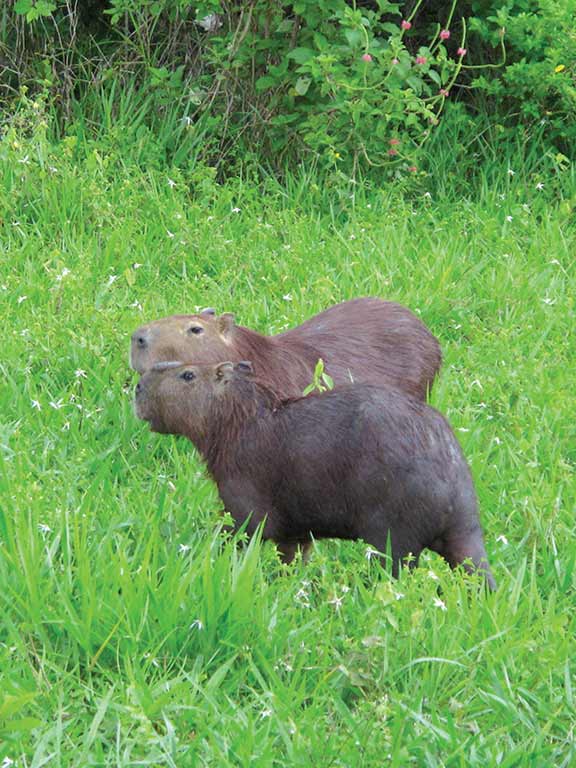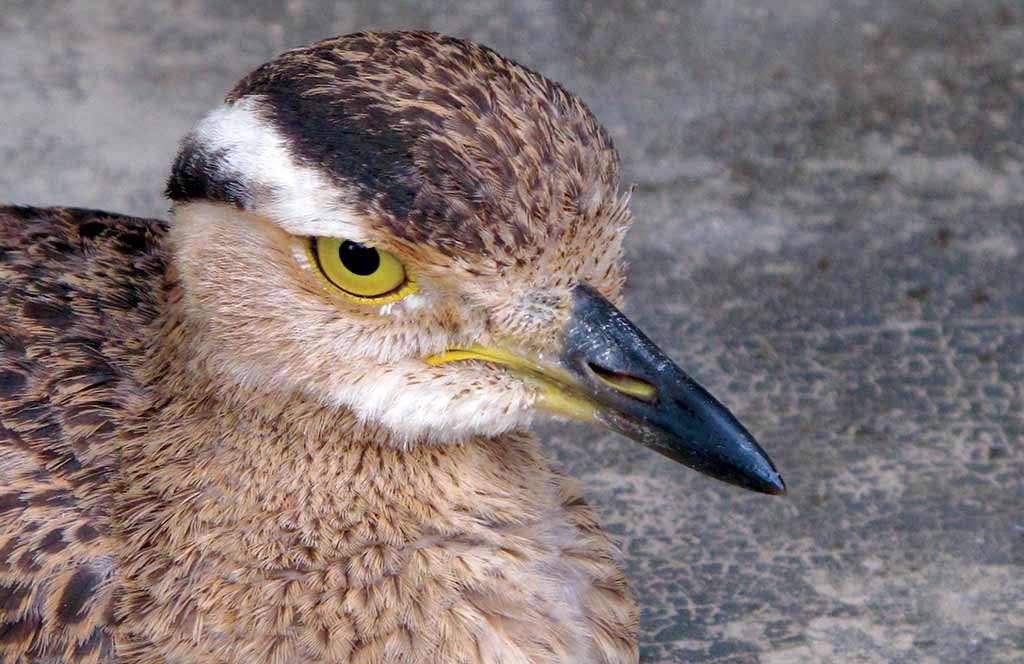Hacienda La Aurora (near the town of Paz de Ariporo, Casanare, cell tel. 310/580-5395), 180 kilometers (112 miles) northwest of Yopal in the department of Casanare and about double that from Villavicencio, is in many ways a typical extensive cattle-ranching farm of the Llanos. It was once part of the immense 430,000-hectare (1.1 million-acre) Jesuit hacienda that was subdivided over time.
The hacienda measures 17,000 hectares (42,000 acres) and has 6,000 head of cattle. However, in one aspect it differs radically from other haciendas in the Llanos: Since the Barragán family, the current owners, purchased it in the 1970s, they have not allowed any hunting of animals, even if that means if jaguars and pumas attack and eat their cattle. This prohibition on hunting comes from the family’s deep-seated conviction that cattle ranching must be a sustainable activity and that it must coexist peaceful with the Llanos’ abundant biodiversity.
Since the Barragán family, the current owners, purchased it in the 1970s, they have not allowed any hunting of animals, even if that means if jaguars and pumas attack and eat their cattle.As a result, the hacienda abounds with wildlife that mixes with cattle herds and is not afraid of humans. As you travel through the farm, on the back of a specially outfitted safari truck, on horseback, or on foot, there is wildlife everywhere you look: herds of absurdly cute looking chigüiros (the world’s largest rodents, also known as capybaras), deer, foxes, anteaters, armadillos, sloths, monkeys, tortoises, and caimans. Even non-bird-watchers will be amazed by what they see: huge ungainly garzón soldados (jabirus), bright red ibises, families of burrowing owls, incredibly exotic plumed hoatzins, parakeets, macaws, and toucans. In the dry season, it is not unusual to see anacondas on the banks of the Río Ariporo or in watering holes. There are also water buffalo and herds of wild horses roaming about. Finally, pumas and jaguars can also be spotted (albeit through wildlife cameras installed in strategic points on the farm). There is most definitely nowhere in Colombia where you can see this much wildlife in its natural setting.
Chigüiros (capybaras) are the world’s largest rodent. Photo © Andrew Dier.
Hacienda La Aurora is also very much a working cattle farm. The herds are spread out throughout the hacienda. There is a main hacienda house, which is the center of operations. When cattle-ranching activities need to be done, such as taming horses, branding calves, or rounding up cattle for sale, vaqueros (cowboys) move to one of several smaller peripheral camps called fundos to do these activities. Viewing the traditional cattle-ranching ways of the Llanos is a fascinating part of a visit to La Aurora.
Haciendas such as this used to be the norm in the Llanos. However, many have been subdivided into smaller, more modern ranches with fenced pastures. Others have been converted into large African palm, corn, soy, or rubber plantations. La Aurora’s administrators complain that it is increasingly difficult to find personnel willing to do what they call the “work of the Llano”—cattle ranching the traditional way—as wages in the oil industry are much better and the work is less taxing.
To fully enjoy a visit to Hacienda La Aurora, stay at least two full days. Accommodations at La Aurora are at the Ecolodge Juan Solito, which borders the ranch. Visits are easier in the dry season (Nov.-Mar.), when getting around the farm is not difficult and wildlife congregates around the water holes. However, a visit in the rainy season is also interesting. The ground often gets drenched, but is not impossible to visit the ranch and spot animals. Also, in the rainy season it is possible to do boat excursions.
All visitors pay a fixed price of COP$120,000 per person per day for all activities on the ranch. In return, all activities are tailored to your wishes and you are accompanied by a dedicated guide. Easily arranged activities include photo safaris on the back of a truck specially outfitted with benches, visits to view the traditional cattle-ranching activities of the hacienda, excursions on horseback, nature hikes, and canoe trips up the Río Ariporo (only in the rainy season). You can also swim in the Ariparo, though you must be careful of stingrays, electric eels, piranhas (a minor threat), and anacondas, but they are on the riverbank. Maybe just skip the swimming!

Double-striped thick knee bird. Photo © Andrew Dier.
If you have a particular interest, such as specialized bird-watching or photographing specific wildlife, these activities can be arranged at no additional cost.
Lodging and food is provided at the Ecolodge Juan Solito (near Paz de Ariporo, Casanare, cell tel. 320/342-6409, COP$180,000 pp including all meals) just across the Río Ariporo on the south side of the Hacienda La Aurora. Juan Solito is owned by incredibly friendly and attentive Nelson Barragán, of the family that owns the hacienda. There are seven simple and comfortable rooms at the lodge. Meals are taken with the lodge staff on long benches in a thatched-roof dining room overlooking the river. Vegetarian fare can be arranged with advance notice. Sometimes, when there is a large group of guests, local musicians and dancers perform traditional joropo music and dance, with Nelson playing the harp.
Excerpted from the First Edition of Moon Colombia.